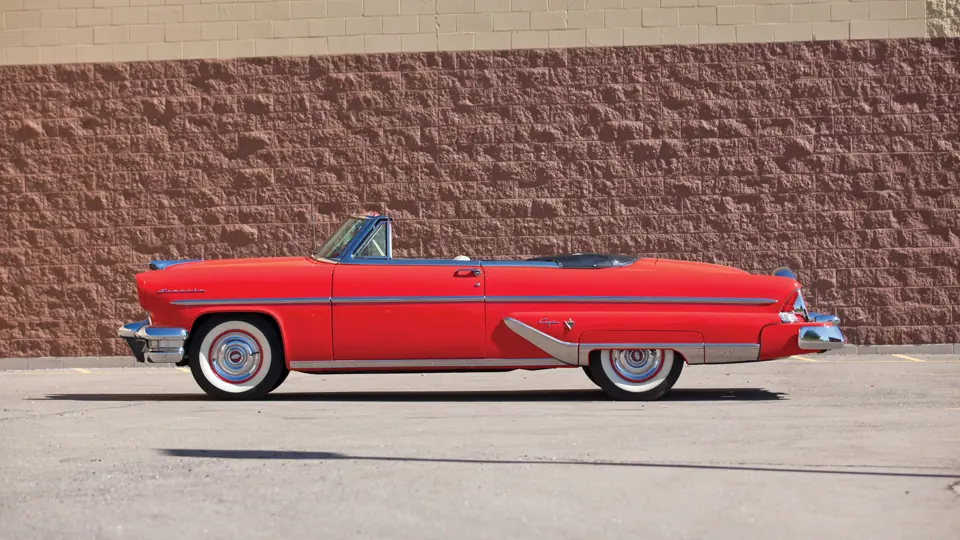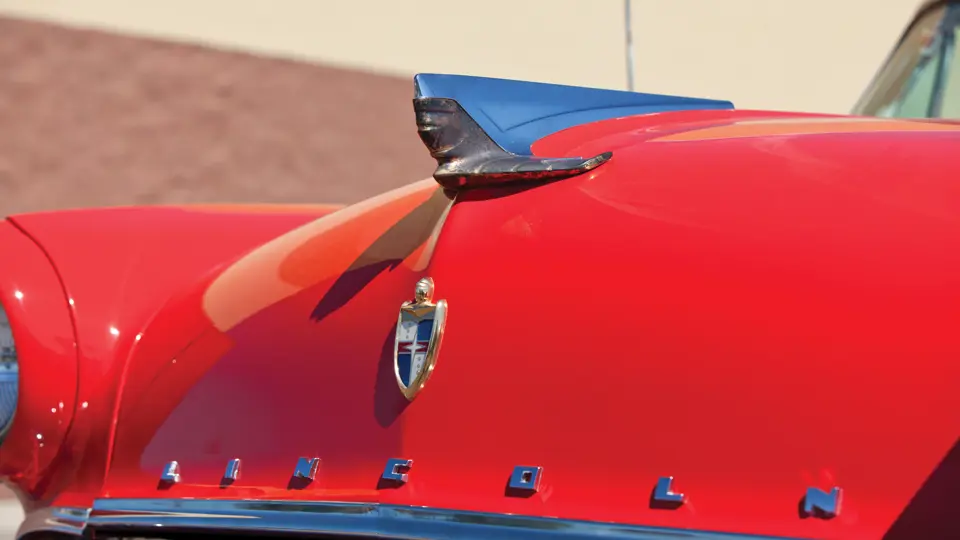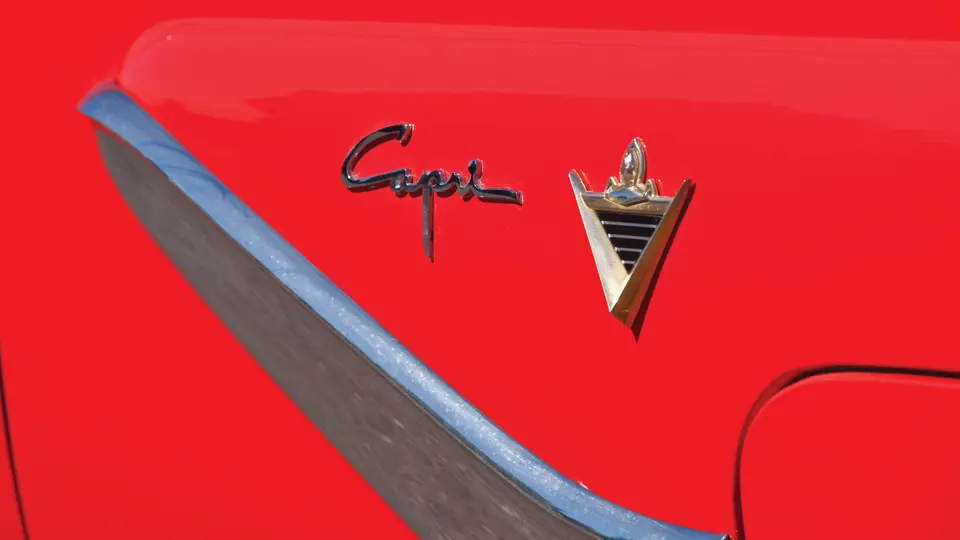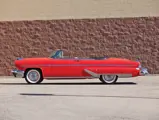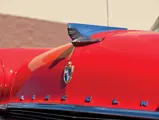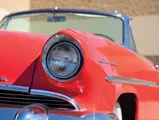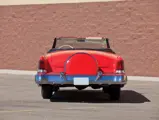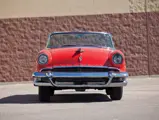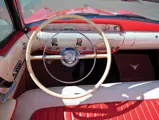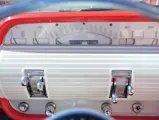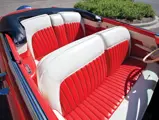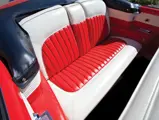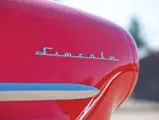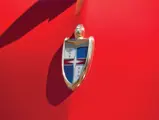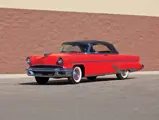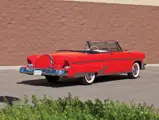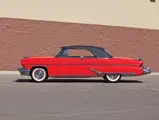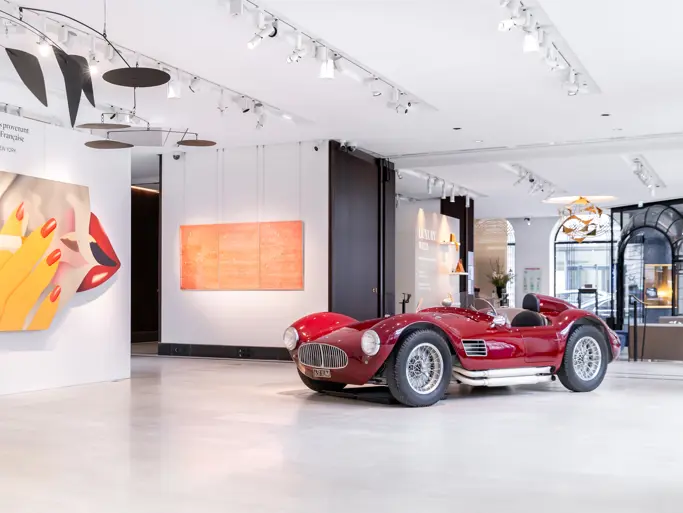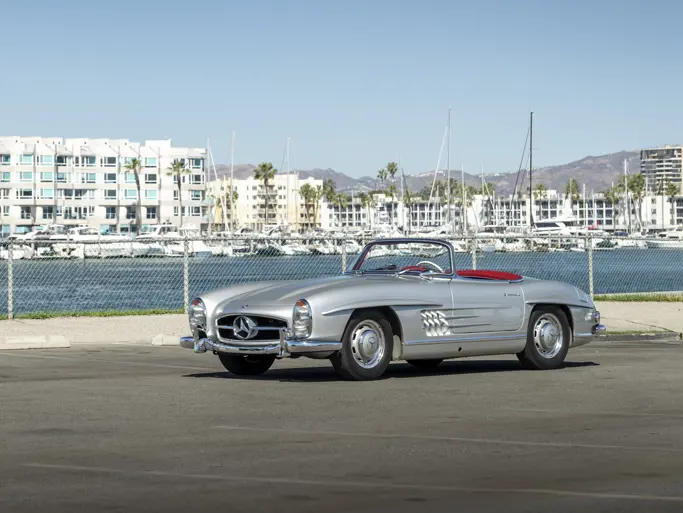225 bhp, 341 cu. in. OHV V-8 engine, three-speed Turbo-Drive automatic transmission, independent front suspension with coil springs, live rear axle with semi-elliptical leaf springs, and four-wheel drum brakes. Wheelbase: 123 in.
Lincoln touted its new models as combining “Elegance with Power,” and mechanical improvements were the big news for 1955. The marque introduced its own Ford-built Turbo-Drive automatic transmission, which replaced the dual-range Hydra-Matic used previously. The new gearbox was essentially a version of the existing Ford/Merc-O-Matic, capable of dealing with the greater torque of the Lincoln V-8. In concert with the new transmission was an increased bore version of the carryover V-8 enlarged to 341 cubic inches. Horsepower was now quoted at 225 at 4,400 rpm, and with a higher compression ratio of 8.5:1, torque was a whopping 332 foot-pounds at 2,500 rpm.
While all of its competitors received new styling in 1954 and 1955, Lincoln’s handsome yet conservative styling was on its third year, having been introduced with the 1952 models. Upfront was a new grille design with new trim rings around the headlights. Fender top ornaments and the “V” emblem at the front of the hood were removed and a slimmer hood ornament fashioned, giving the car a sleek, clean look. The Lincoln name in block letters was once again included on the front hood edge. Rear quarter panels were extended to create a tail fin with a hooded vertical taillamp. Below this was the backup light matching the new bumper shape. Bodyside trim was also redesigned, including a sweeping brushed stainless pieced that extended down to the rocker panel area.
Despite the changes made to distinguish the new models, sales were lost to the competition, which featured wraparound windshields, more distinctive tail fins, and . . . horsepower. As a result, model year production was at its lowest level since the shortened 1948 model year at 27,222. That total included just 1,487 Capri convertibles, making them comparatively rare against comparable convertibles.
At a base price of $4,072, it was Ford Motor Company’s and Lincoln’s most expensive model. New for ’55 was an interior with un-pleated seat bolsters and a convertible top made of Orlon, one of the “miracle fabrics” of the mid-’50s. Lincoln also offered an optional Multi-Lube power lubrication system—an industry first—along with automatic starting, rear door safety locks on sedans, and coordinated-action windshield washers.
Finished in a mid-year color of Huntsman Red with a black convertible top over a red and white leather interior, this eye-catching example is equipped with both power steering and brakes, as well as automatic transmission for easy top-down cruising. It has been in the consigner’s collection for 17 years and has recently been gone over mechanically and given a fresh tune-up prior to being offered for sale.
A fun driver, this car would be an excellent “cruiser” for enjoying this summer in the comfort and luxury that are Lincoln traditions.

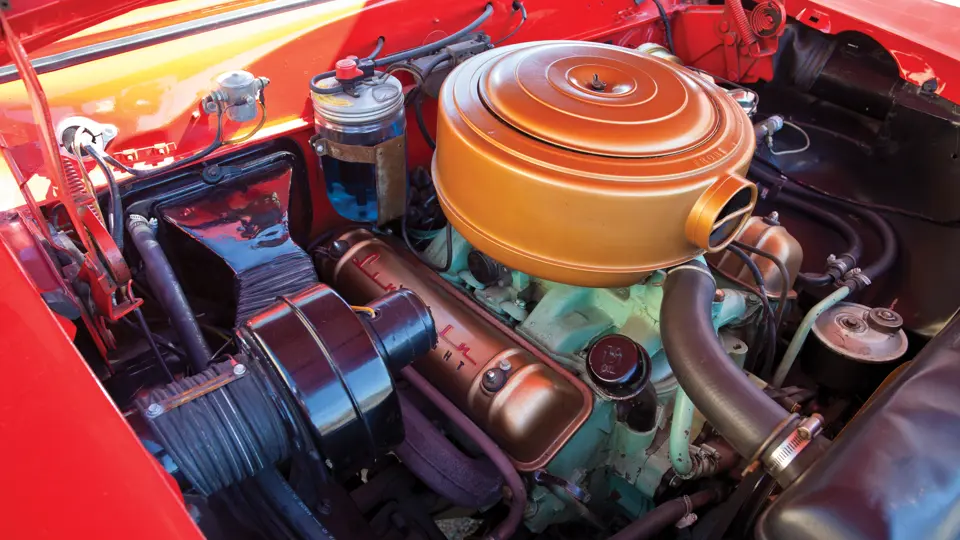



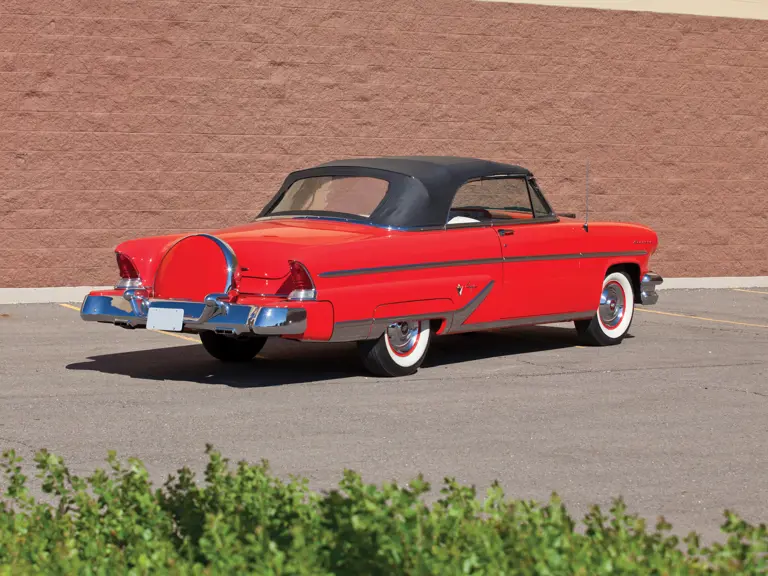

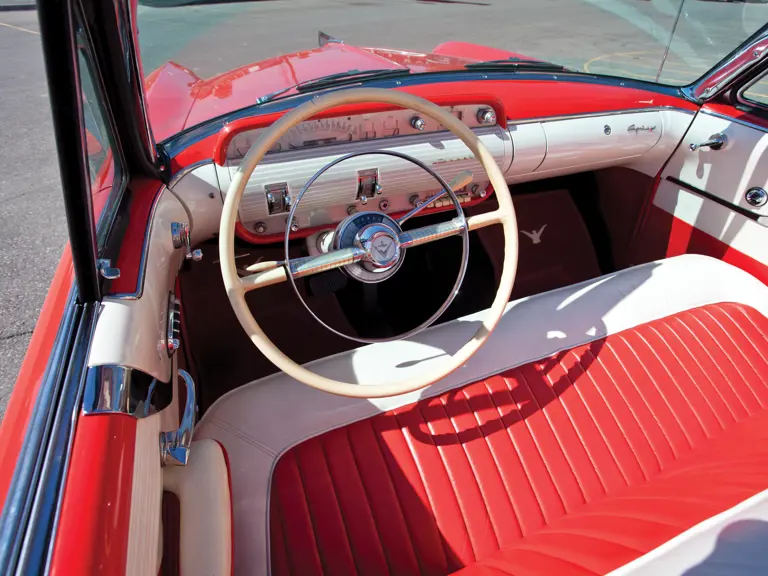
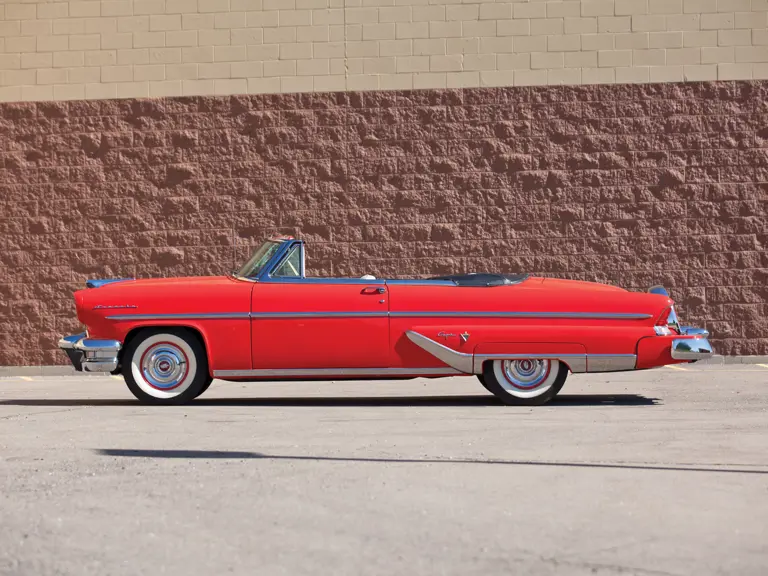
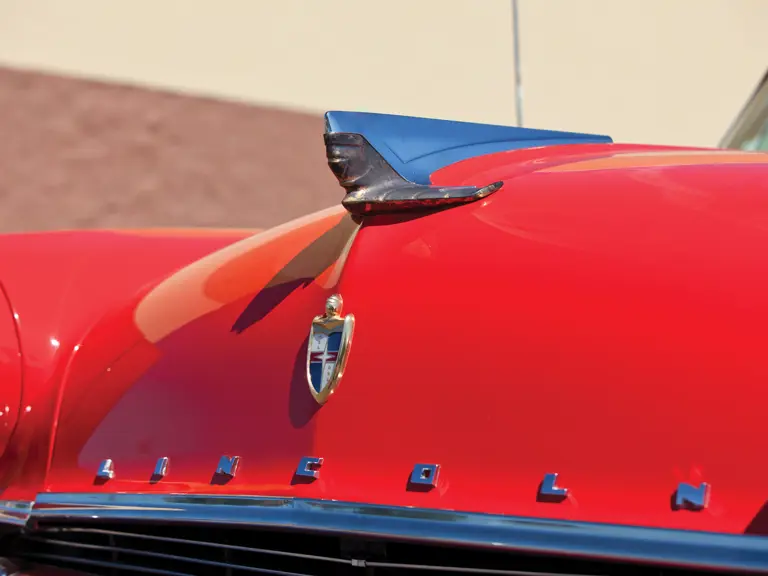
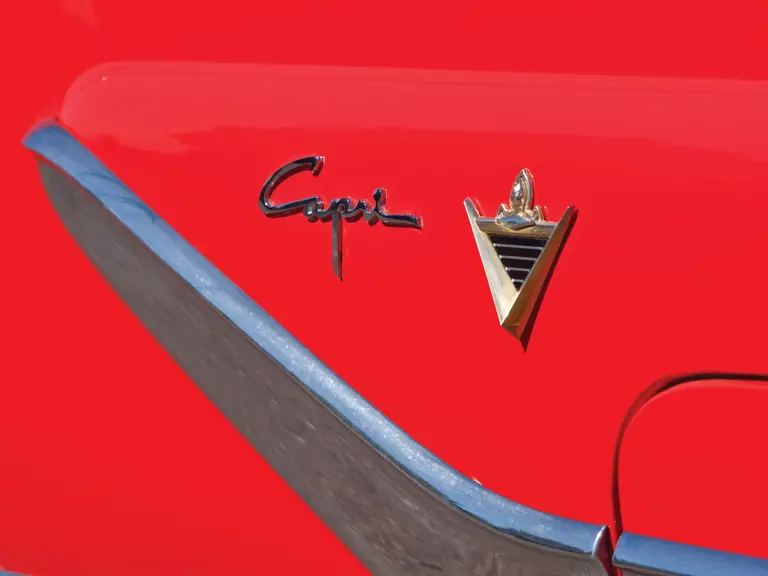
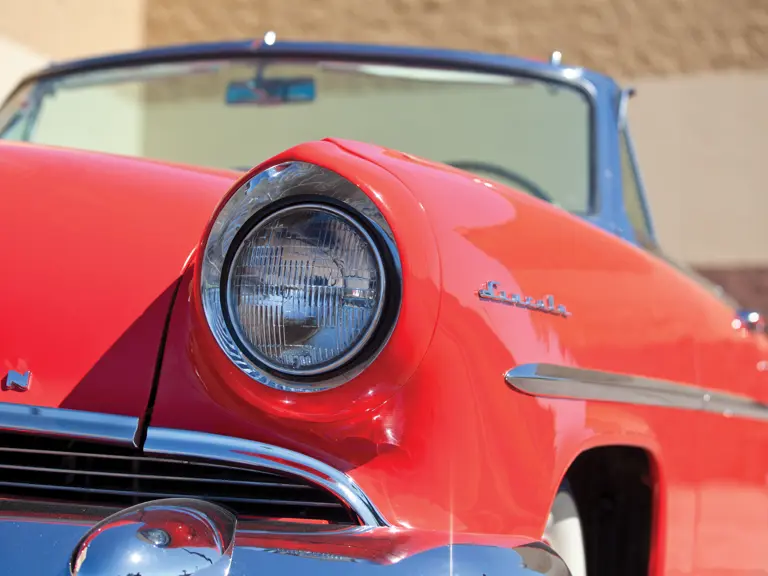
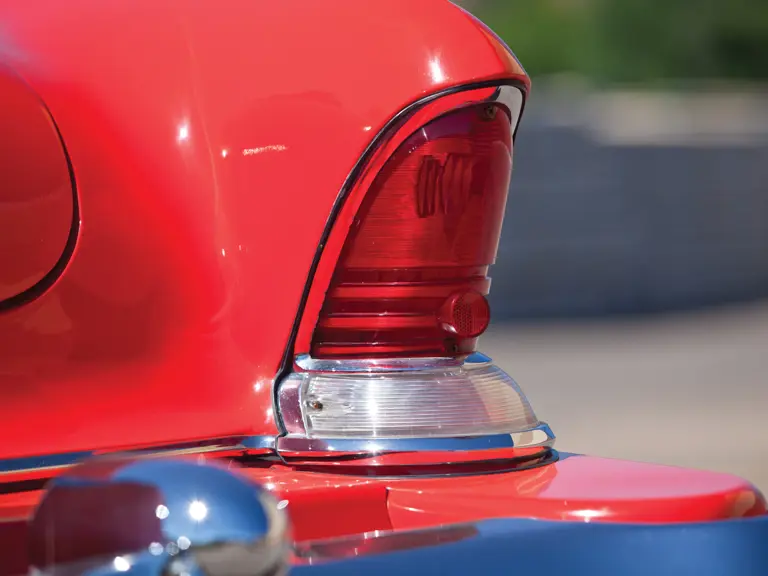
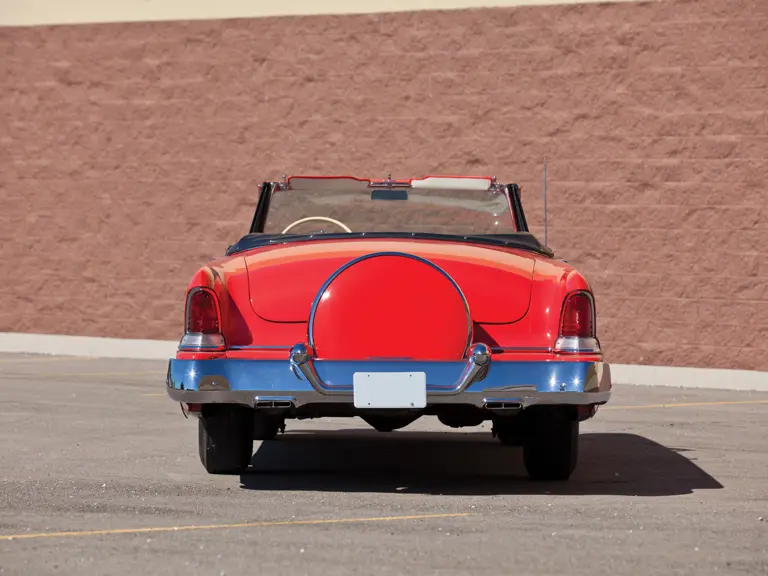
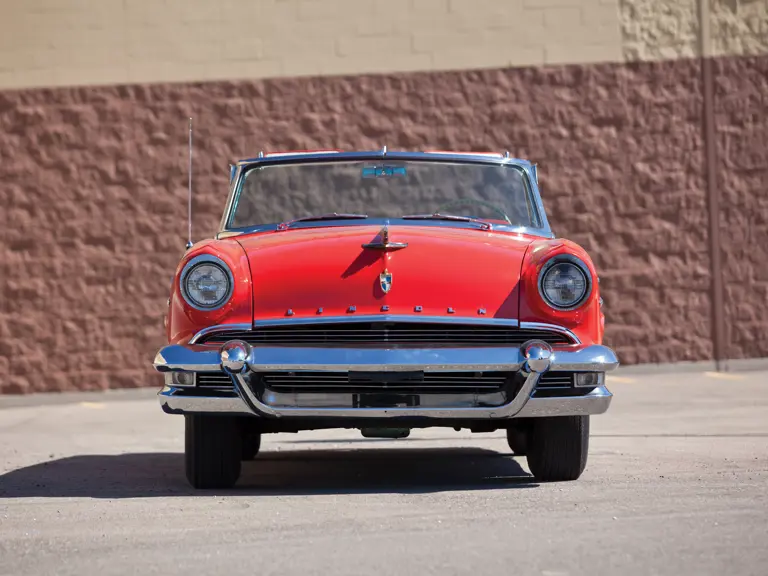
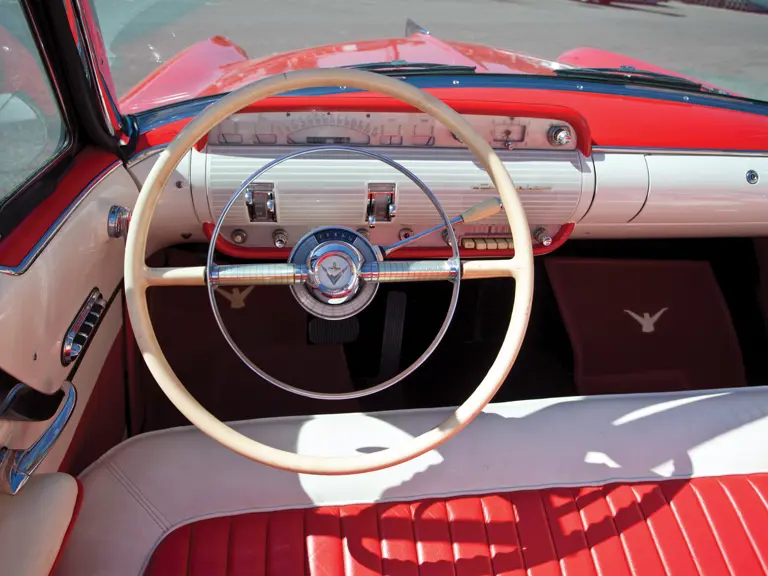
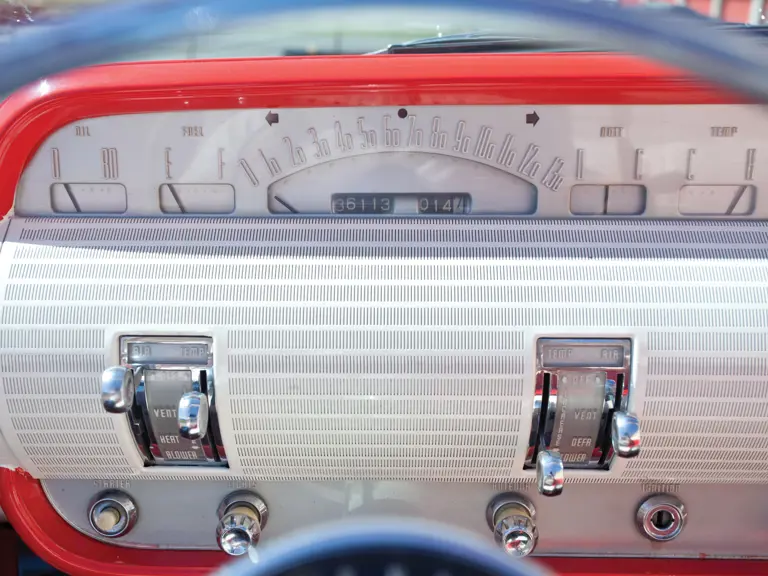
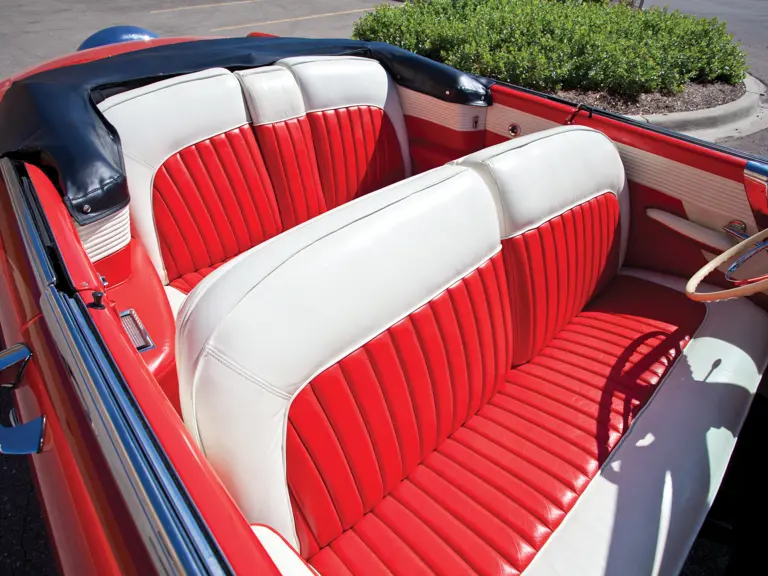
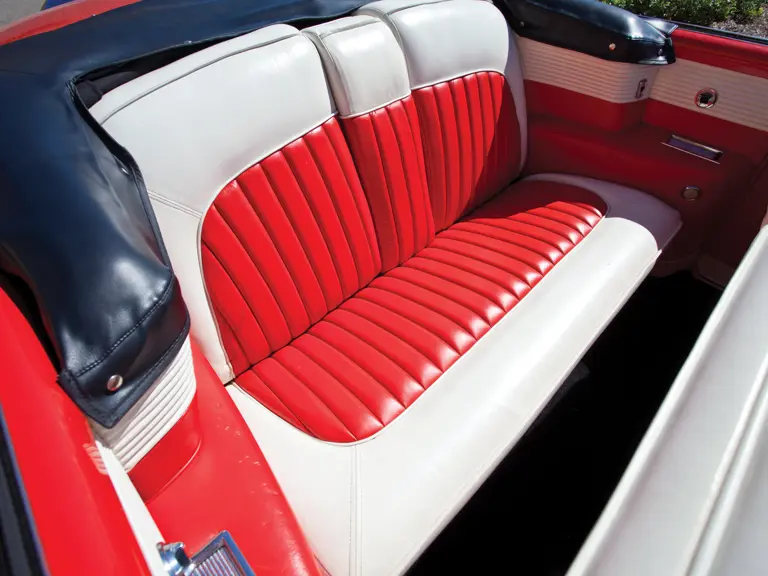
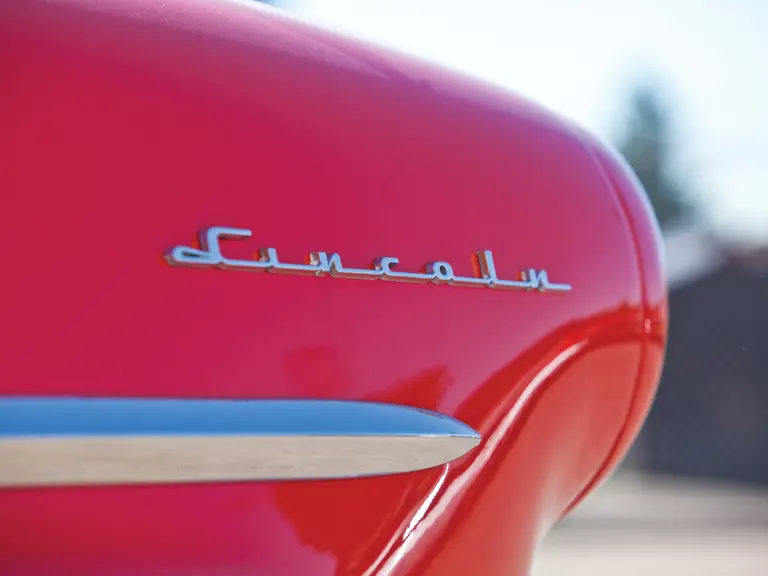
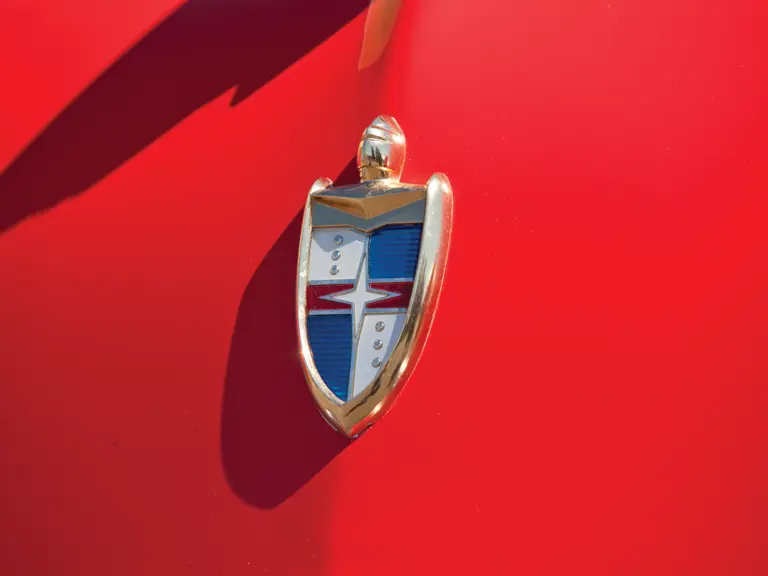
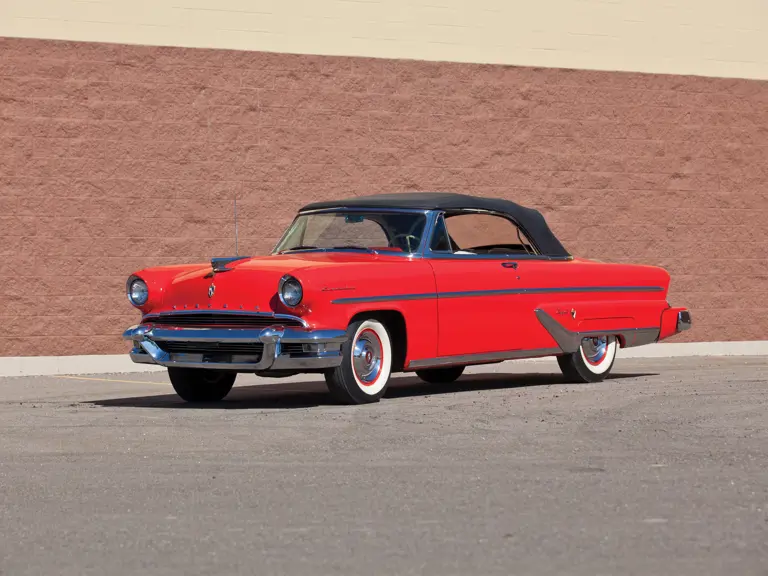
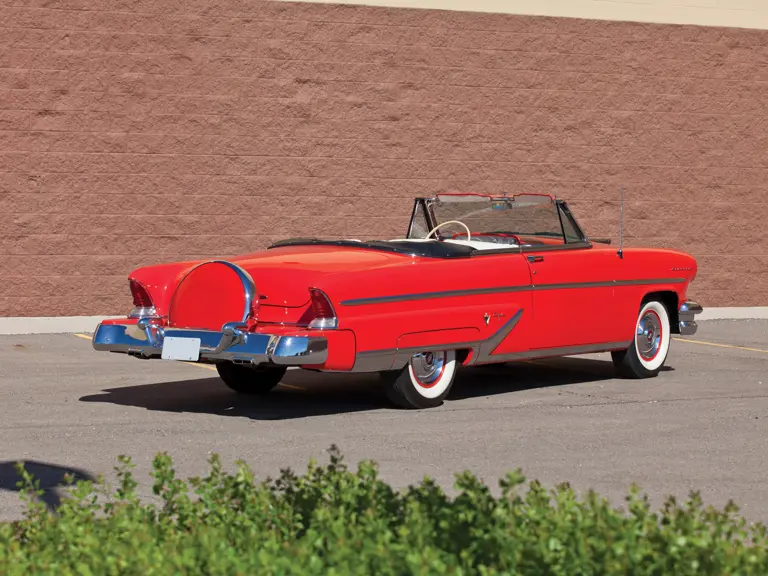
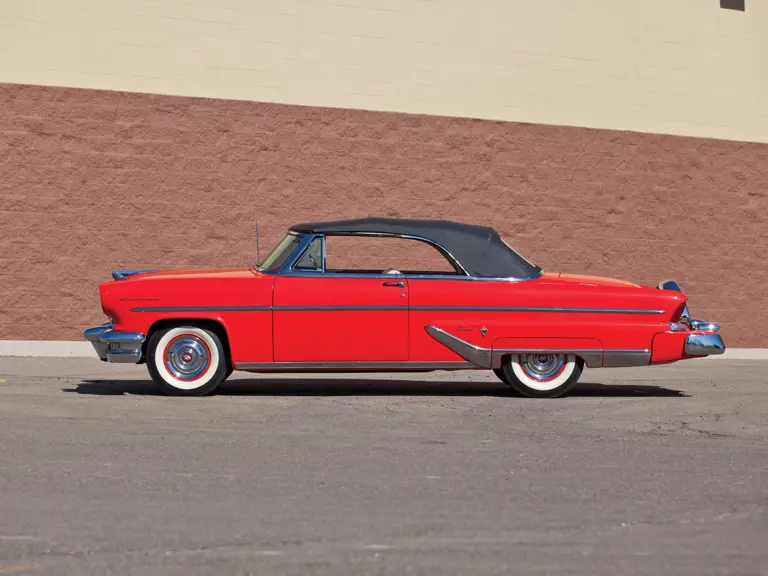
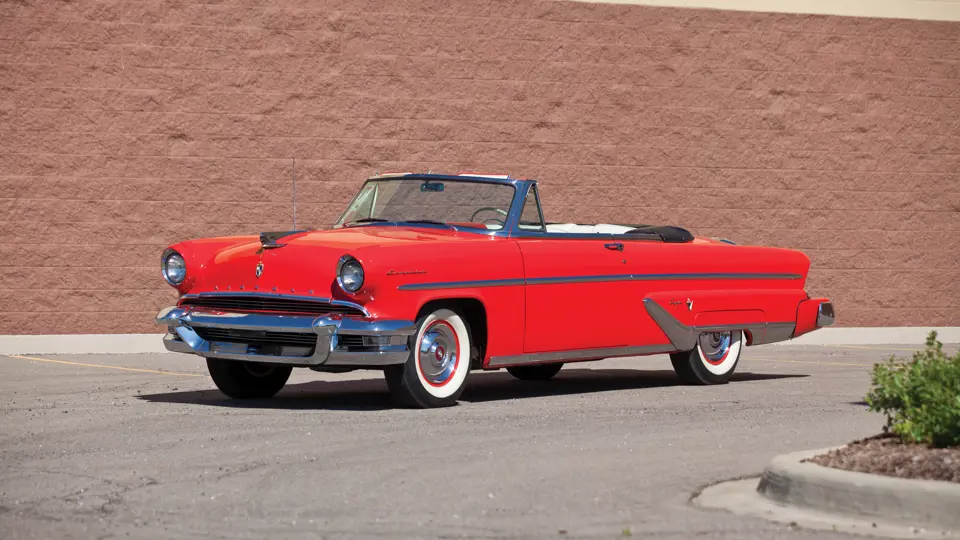
 | Plymouth, Michigan
| Plymouth, Michigan
